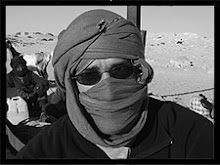Phnom Penh, Cambodia. Once known as the "Pearl of Asia", Phnom Penh was considered one of the loveliest of French-built cities in Indochina. That was back in the 1920s though, when women were "dames" and men still spouted misogynistic anachronisms, like "dames". It may be time for a new moniker, one that is more reflective of the times. Nowadays, perhaps something along the lines of "Zirconium of Middlingville" might be more apropos.
It's not that there is anything inherently wrong with Phnom Pehn, its just that it doesn't really have that much going for it either. I trekked around most of the city and can say with absolute certainty that the addition of one more shop selling mobile phone cards, various auto parts, rows of soap and imported Chinese candy--the very same thing available at 763 shops across the city--may very well tip the tide in favor of supply over demand. Much more Friedman than Keynes if you ask me, but sans the strong-arm dictator to keep people in line. But I'm no economic theorist, so perhaps there is some grand design that eludes me. I bought some soap.
At one point I crossed an imaginary boundary and was in a different city. It was still Phnom Pehn but the zirconium had been spit-polished to a sparkly shine. A narrow corridor in the northern section of town is home to upscale hotels, posh restaurants and the grounds of the Royal Palace, containing a few really nice temples and some beautiful gardens. Walk a block out of the corridor and you're right back in the ring, paying city prices for a mirthless open-air garage sale.
Lets move onto something a bit more cheery, shall we? Genocide. It was all the rage back in Cambodia in the late 70s. Most of you have probably heard of Pol Pot, a dastardly fellow with big teeth and a fat bottom lip who executed approximately 1.6 million of his own countrymen. Pol Pot was the leader of the Cambodian Communist movement known colloquially as the Khmer Rouge, which, despite the evincing name, had nothing to do with powdering one's face. Mr. Pot and friends thought it would be a real hoot to revert to an agrarian society post-haste, so they evacuated the city centers, abolished money, religion, foreign languages and good cheer, and sent everyone to the countryside to farm rice. Lots of rice.
Phnom Pehn is home to the Tuol Sleng Genocide Museum, a one-time High School that was converted into a prison and torture facility, temporarily housing thousands of unfortunate souls until they were sent to Choeung Ek, the infamous Killing Fields. I visited both Tuol Sleng and Choeung Ek to get a deeper understanding of the conflict and its aftermath. Though important memorials both, they seemed to be lacking in both real gravitas or enlightening information. One sign in Choeung Ek declared the Pol Pot regime to "be the most worst even than the atrocities of Hitler" in their depravity. Having previously visited the concentration camps in Poland, all I can state is that the death toll during the Cambodian atrocity was not nearly as high nor was as coldly "production-oriented" in its methods. Tough call, comparing genocides. I'll leave that one for the historians. Undoubtedly some people reading this will find my glib attitude towards genocide rather distasteful, which is why I propose we round all of those people up and bludgeon them to death with this.
Subscribe to:
Post Comments (Atom)





No comments:
Post a Comment